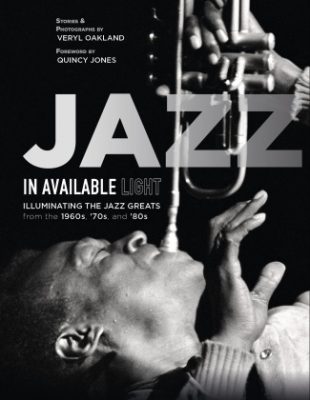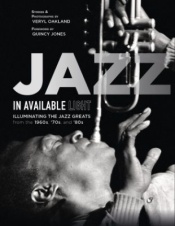.
.
.
Jazz in Available Light: Illuminating the Jazz Greats by Veryl Oakland is the most impressive book of jazz photography published in years. The book features over 300 spectacular photos – many of which previously unseen – of iconic artists of the 1960’s to 1980’s. You will discover great photos of Thelonious Monk, Dizzy Gillespie, Dexter Gordon, Duke Ellington and Stan Getz, for sure, but also artists like Shorty Rogers, Paul Bley, Phil Woods, Buddy Rich and Sun Ra. The book is also filled with entertaining and smart firsthand accounts of Mr. Oakland’s experience with the artists he photographed.
With the cooperation of Mr. Oakland, beginning with this issue, Jerry Jazz Musician will regularly publish a series of posts featuring examples of the photography and stories/captions found in this important book.
In this edition, following Mr. Oakland’s introduction, a sampling of his photographs of Red Garland, Dizzy Gillespie and Rahsaan Roland Kirk are featured.
.
.
*
.
.
Veryl Oakland
.
___
.
.
Growing up in South Dakota during the 1940s, music was a big part of my household – my grandfather even toured with the John Philip Sousa Marching Band. So, it was only natural that music would be a big part of my life, and my parents decided to buy me a cornet early on. After seven years of private lessons, I can honestly say I could pretty much play anything that was written.
One night while listening to the radio, a most unlikely event occurred. I stumbled onto the 50,000-watt station KSL in Salt Lake City just in time to hear all-night host Wes Bowen playing the theme song for his program, “All That Jazz.” It was Red Garland and his Trio playing “Blue Red.”
I stayed up well into the early morning hours – and at every opportunity thereafter – listening to those great sounds being played by jazz giants I’d never heard before. I was totally hooked.
Whatever future plans I might have made in music were dashed the night I heard Dizzy Gillespie’s solo on “Hot House,” from the Jazz At Massey Hall album with Charlie Parker. After that, I never picked up my horn again. I just knew that I would never be able to improvise, to create like Gillespie. But I also knew I’d be a jazz fanatic for life.
Dizzy Gillespie
After heading west to college, a couple of friends joined me on a trip to my first Monterey Jazz Festival. That was where I noticed photographers down in front filming all the greats in performance….How cool is that, I thought.
Not until graduating from college and fulfilling my military obligation did I buy my first camera at age 25, and begin learning on my own. Having been immersed in music, I gravitated toward the entertainment business, landing my first real job as publicity manager for The Nugget Casino near Reno, Nevada. It was there, while working with the featured stars – as well as taking in late night shows in the other major hotels – that I started to connect with people in the music industry. And on weekends, I would also drive to San Francisco, catching different acts and photographing musicians at a variety of jazz clubs.
On one of those SF trips in 1967, something happened that would change my course with photography: I drove in to catch Roland Kirk at a Sunday afternoon matinee performance at The Jazz Workshop, spending more than four hours photographing him, taking my time practicing my craft.
After, on a whim, I sent contact sheets of the photos I took that day to Down Beat. Soon after, the editors wrote back asking for several enlargements. And, one of those images graced the cover of their May 18, 1967 issue, becoming my first photograph ever sold.
And that’s how it all began for me.
My book title, Jazz In Available Light, was chosen because I never wanted to disrupt either the musicians or their audiences with annoying strobe lights. Plus, I didn’t want to impose on the artists’ time by setting up all kinds of equipment and taking forced poses. Instead, I opted for more natural, informal portraits.
You might wonder, why only the 1960s through ‘80s? I had planned to stay active as a jazz photojournalist well past my 50th birthday, but in 1990 our home flooded. My negatives and many photographs had been stored downstairs, so the better part of three decades of work was severely damaged. I stopped shooting, withdrew from the scene, and avoided the many boxes of negatives.
But in 2010, I decided to tackle everything head-on, and I got an assessment of the damage from a photographic curator. Shockingly, I found out that much of my collection was still salvageable, albeit with a lot of work – not a total loss. That’s when I began seriously working on writing my book.
I consider myself supremely fortunate to have had the opportunity to be in the midst of, interact with, and get to know, so many of our jazz giants, virtually all of whom have left a treasure trove of critically important recorded works of lasting value. The contributions of these great artists, their like-minded musical brothers and sisters, and the masters who came before them, are truly incalculable.
I hope you enjoy a sampling of excerpts from the book – I’ve continued sharing more stories on my site and on social media too, as the book could never fit all I wanted to include.
In this edition, I will share some photographs taken of Rahsaan Roland Kirk, Red Garland, and Dizzy Gillespie.__
.
.
______
.
.
Rahsaan Roland Kirk
Seeing Roland Kirk for the first time in 1967 was like witnessing an unexpected, one-man performance extravaganza. On flute, there was nothing simple once he finished the theme and opening choruses. While playing, he soon began humming and simultaneously adding vocalizing to the mix before interjecting an accompanying chorus on nose flute, and then for the finale, launched into a series of double-tongue passages just before ending in a flourish and blowing his siren whistle.
.
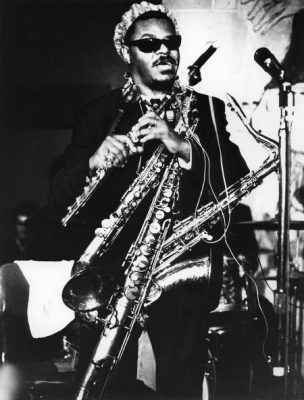
.
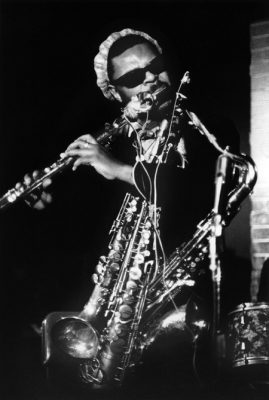
.
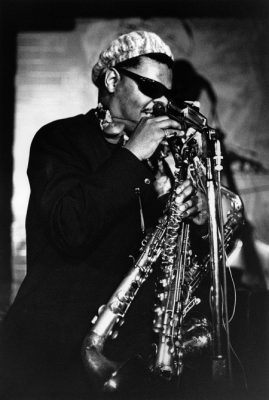
.
.
This is the photo Down Beat chose for their 1967 cover, and the one that launched my photography career. Kirk’s phenomenal circular breathing ability on all three instruments – being able to so smoothly and seamlessly play extended choruses for up to minutes at a time without removing his horns from his mouth – was mind-blowing.
.
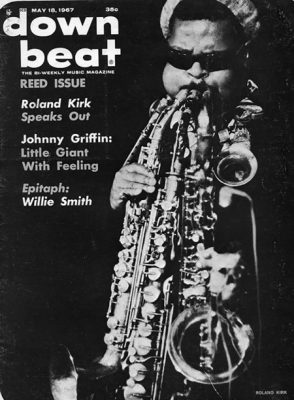
.
.
.
Red Garland
.
In the darkened confines of San Francisco’s Keystone Korner, Red Garland was right at home. It was 1977, and after having been away from the scene for many years, Red was rejuvenated to be in the company of two stalwarts, bassist Leroy Vinnegar and his drummer from the glorious Miles Davis/John Coltrane days, Philly Joe Jones.
.
.
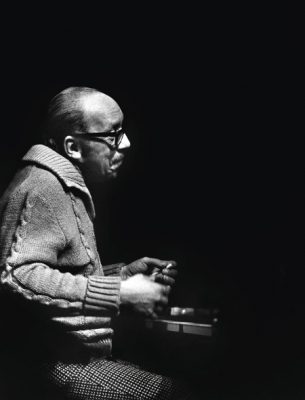
.
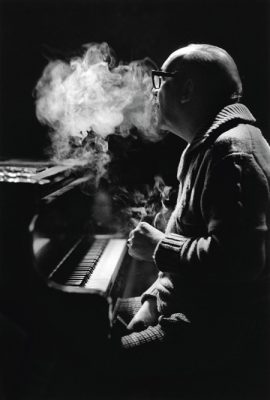
.
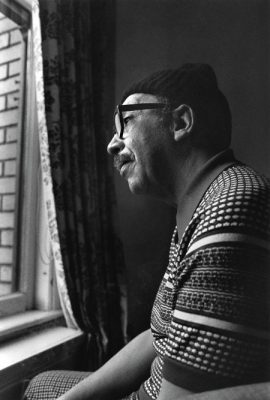
.
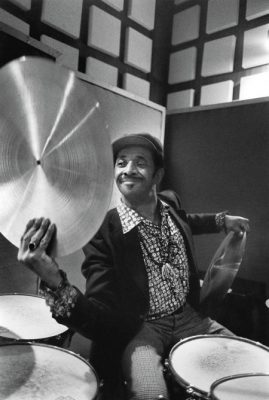
Philly Joe Jones
.
.
.
Dizzy Gillespie
.
Just witnessing his puffy cheeks and the upturned bell of his trumpet was all that jazz aficionados needed to see to know that Dizzy Gillespie was in the house. No other trumpeter had a more direct impact on my own personal career in music.
.
.
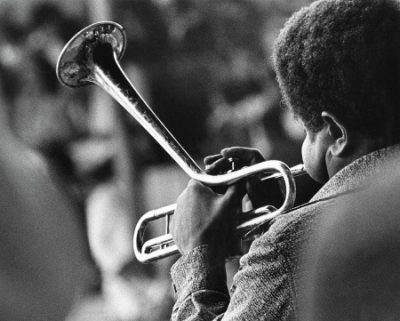
.
.
Click here to read the edition featuring Stan Getz, Sun Ra and Carla Bley
Click here to read the edition featuring Art Pepper, Pat Martino and Joe Williams
Click here to read the edition featuring Yusef Lateef and Chet Baker
Click here to read the edition featuring Mal Waldron, Jackie McLean and Joe Henderson
Click here to read the edition featuring Dexter Gordon, Art Farmer and Johnny Griffin
Click here to read the edition featuring Thelonious Monk, Paul Bley and Cecil Taylor
Click here to read the edition featuring drummers Jo Jones, Art Blakey and Elvin Jones
Click here to read the edition featuring Monk Montgomery and the jazz musicians of Las Vegas
Click here to read the edition featuring Sarah Vaughan and Better Carter
.
.
___
.
.
.
Jazz in Available Light: Illuminating the Jazz Greats by Veryl Oakland
.
“…a truly invaluable work that features some of our most revered music icons, from their strongest to their most vulnerable states as human beings. The pictures and stories pierce the soul in a manner that can only be understood through a personal journey – one in which I urge you to embark on and discover for yourself as you read through the contents of this book.”
-Quincy Jones, from the introduction to Jazz in Available Light
.
Click here for more information about the book
.
All photos and text used with permission of the author
.
.




